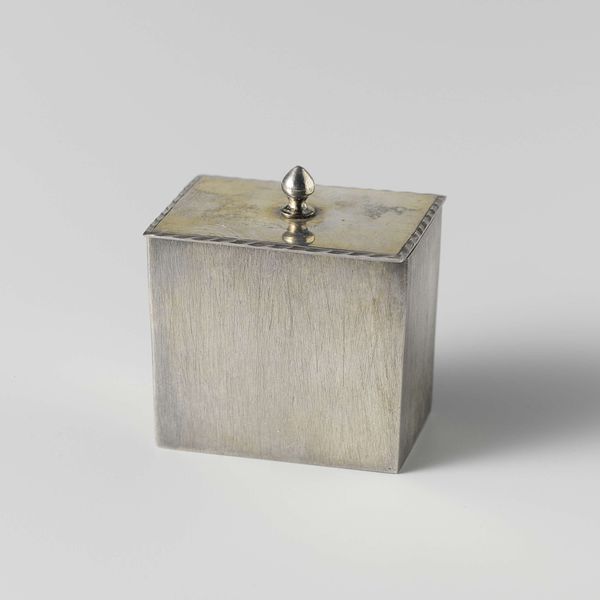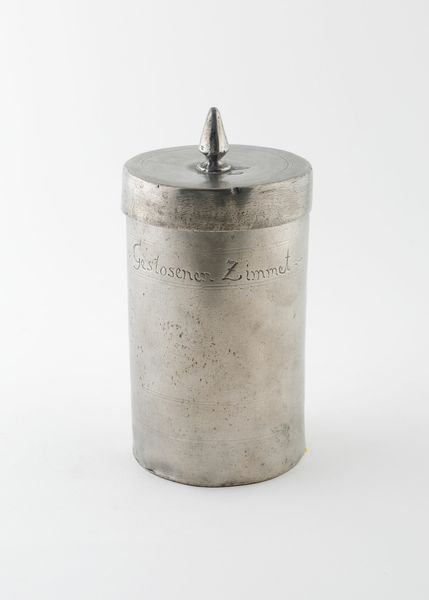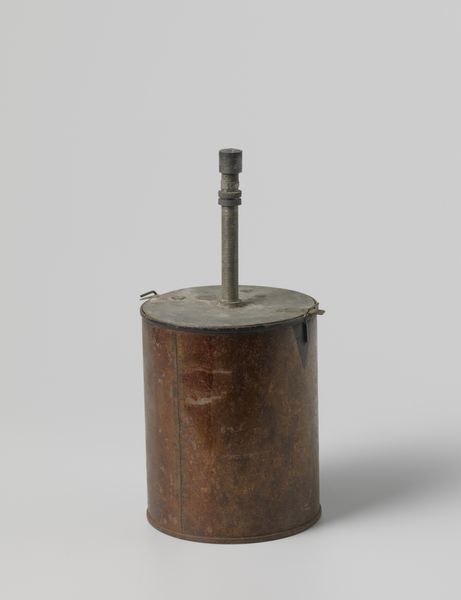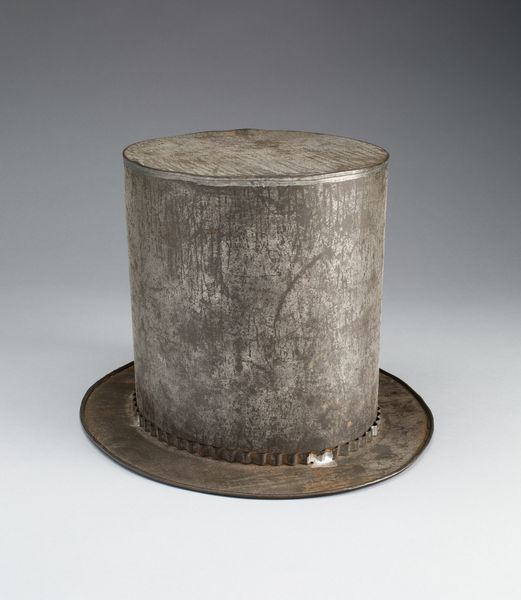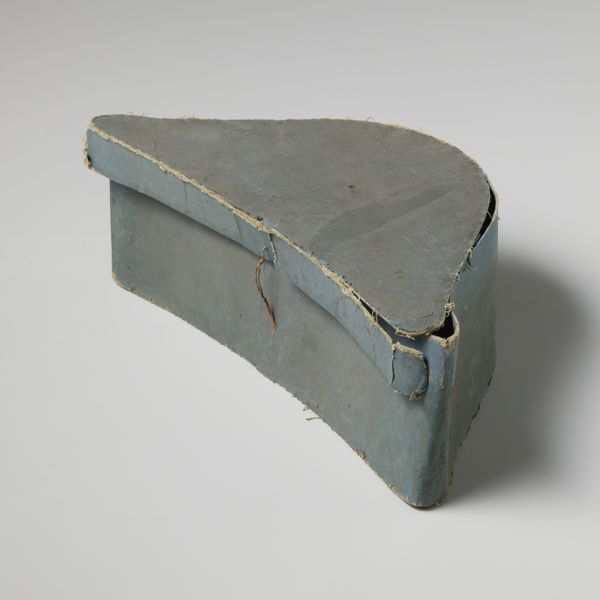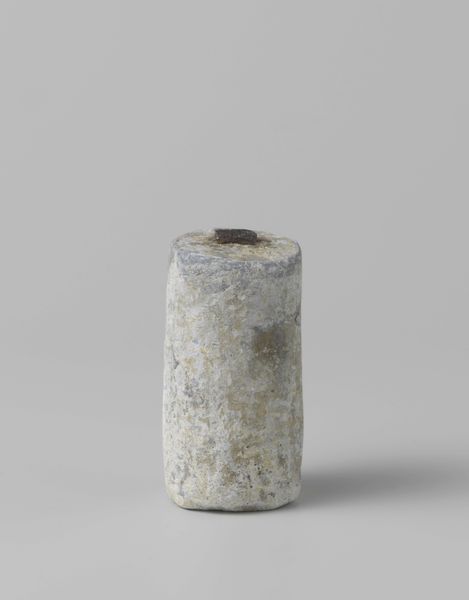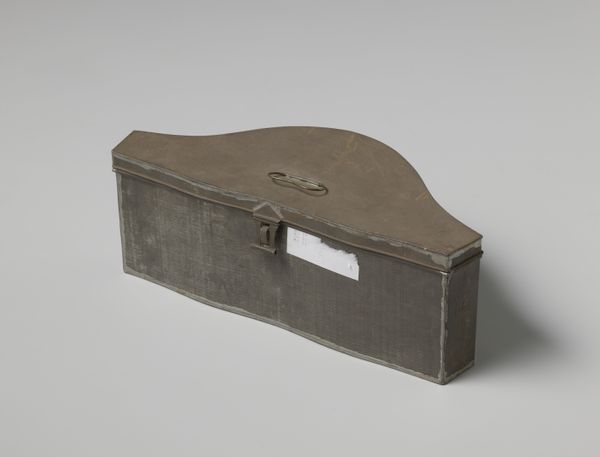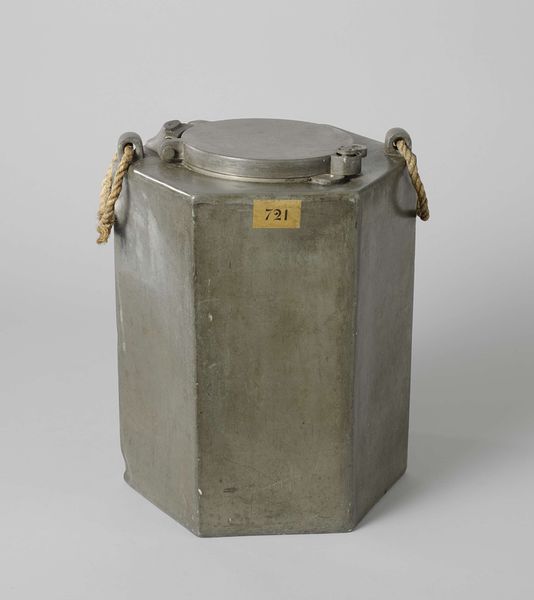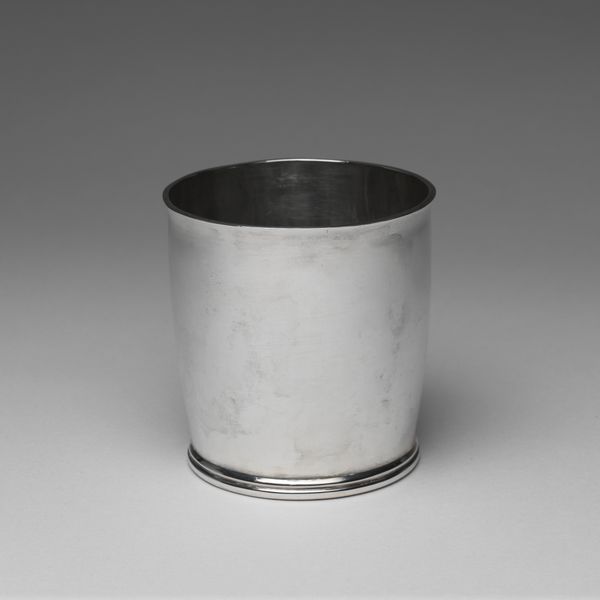
metal, sculpture
#
metal
#
asian-art
#
sculpture
Dimensions: H. 3 1/2 in. (8.9 cm)
Copyright: Public Domain
Curator: I'm immediately struck by the muted tone and restrained elegance of these metal tea caddies. They appear almost weighty despite their modest size. Editor: We're looking at a pair of inscribed tea caddies, dating back to the 17th century. They’re currently part of the collection at the Metropolitan Museum of Art. Attributed to the esteemed Chinese artisan Shen Cunzhou. Curator: There’s something profoundly symbolic in the careful containment of tea leaves. In Asian art, tea itself embodies ritual, contemplation, a bridge between the mundane and the spiritual. Editor: I am more intrigued by the craft. The metalwork suggests a complex process, especially given the period, the repetitive hammering and the joining of sections. What metal was used? Where was it mined? The social implications of tea, and therefore tea caddies, for both local use and global trade routes… It's staggering when you consider it. Curator: Precisely. Even the geometric faceting, the soft corners – they speak of harmony, an understanding of nature through formalized expression. The octagonal shape and vertical division of faces relate to ancient concepts of harmony and wholeness. One cannot overlook such a thoughtful deployment of inherited forms in such quotidian yet important items as tea caddies. Editor: And the inscription... a subtle yet decisive act. Adds labor, therefore value, while embedding ownership and a lineage of handling and use within the very fabric of these containers. What does it say? Is it an artisan's mark? A date of creation, or some aphorism? Each of these offers distinct information on production circumstances. Curator: Well, for me these humble objects tell us more about ourselves. They stand for a constant tradition, an effort towards social refinement, a kind of quest. Editor: For me, a beautiful container remains precisely that without an understanding of its fabrication in a particular economic context. Curator: Indeed, an intersection between cultural values, the symbolism behind traditions, and how our hands have shaped them over time. Editor: Which means, ultimately, we must inquire who were those hands, not just who putatively "designed" or oversaw creation of these items, if we're ever to adequately reckon with them in relation to the labor that produced such commodities.
Comments
No comments
Be the first to comment and join the conversation on the ultimate creative platform.

